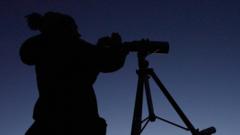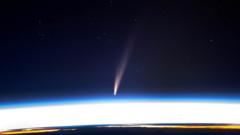As a rare celestial phenomenon beckons, astronomers are excitedly preparing their telescopes to observe T Corona Borealis (T Cor Bor), a star that only becomes visible approximately every 80 years. It has been over eight decades since this awe-inspiring star system graced the night sky, with its last significant eruption witnessed in 1946 by 15-year-old amateur astronomer Michael Woodman. While waiting for his father that fateful night, Woodman caught sight of T Cor Bor shining brilliantly in the constellation Corona Borealis. His remarkable observation led to a letter from the Astronomer Royal, confirming him as the first in the UK to document the star's dazzling appearance.
Today, the now 94-year-old Woodman hopes to experience the stellar spectacle once more, a wish shared by stargazers and scientists alike as they prepare for its potential return. Research indicates that T Cor Bor, situated about 3,000 light years away, undergoes intermittent eruptions resulting from a gravitational interaction between a small white dwarf and a larger red giant. Unlike most stellar events, this phenomenon is brief, shining vibrantly for only a few days.
In the coming days, astronomers at the Brecon Beacons, also known as Bannau Brycheiniog, are looking for signs that T Cor Bor may soon erupt again, possibly sending out hints through fluctuations in brightness. With the object currently at a dim magnitude of 10, visibility will require telescopes or binoculars, although excitement is palpable.
Dr. Jane Clark of the Cardiff Astronomical Society explains that the process leads to a nuclear explosion when the compressed material creates an intense outburst of energy. "When that happens, it will shine like the best Christmas tree in town," says Clark.
Astronomers remain optimistic with new technologies for a closer observation, promising the chance for deeper comprehension of this stellar wonder. As Woodman expresses hope to glimpse the light show again, he muses about the uniqueness of being among only a few who have witnessed this phenomenon twice if he succeeds. "If I'm alive, if I see it, I will be the only one who's seen it twice," he comments. The astronomical community now eagerly awaits this fleeting moment when the cosmos may shine brightly once more.







